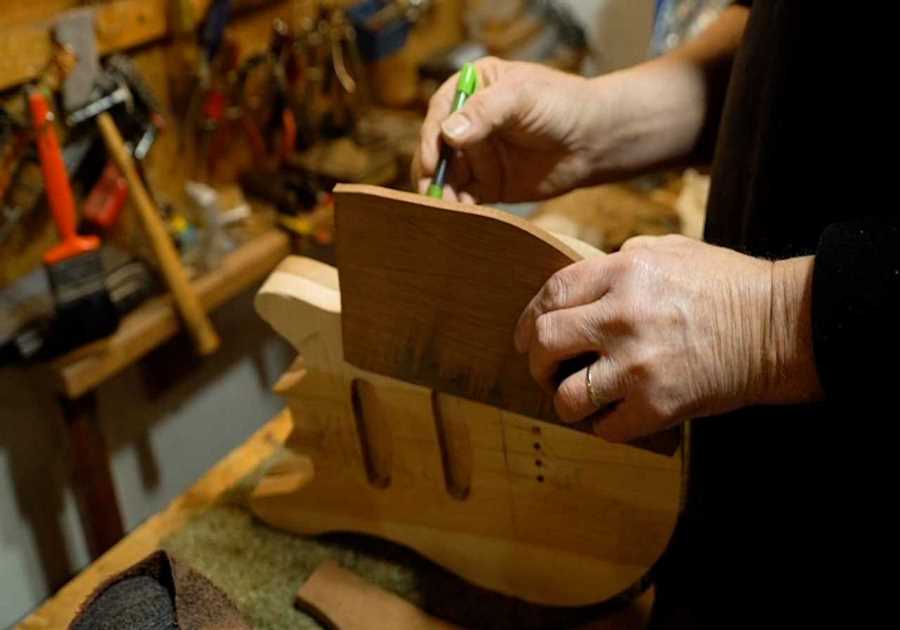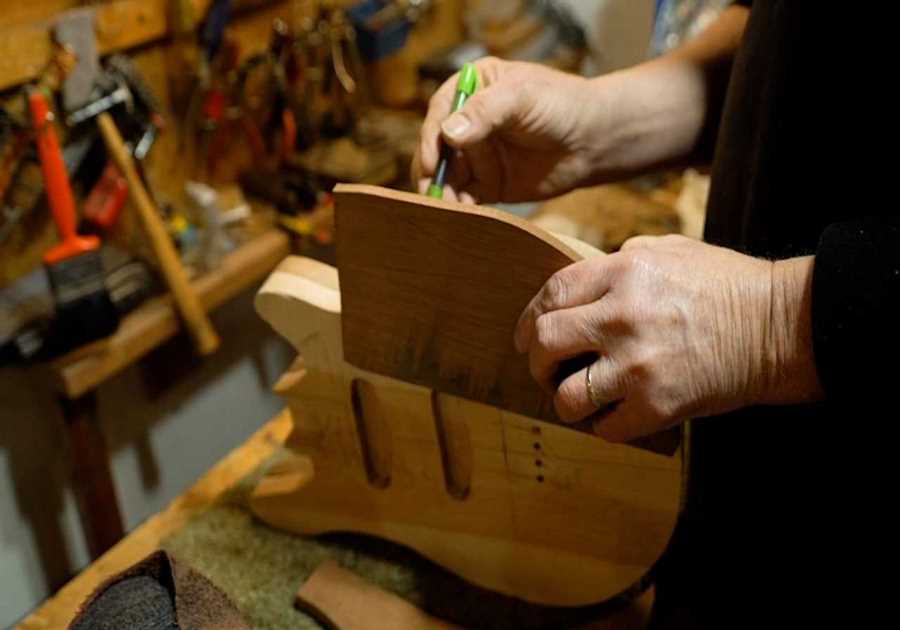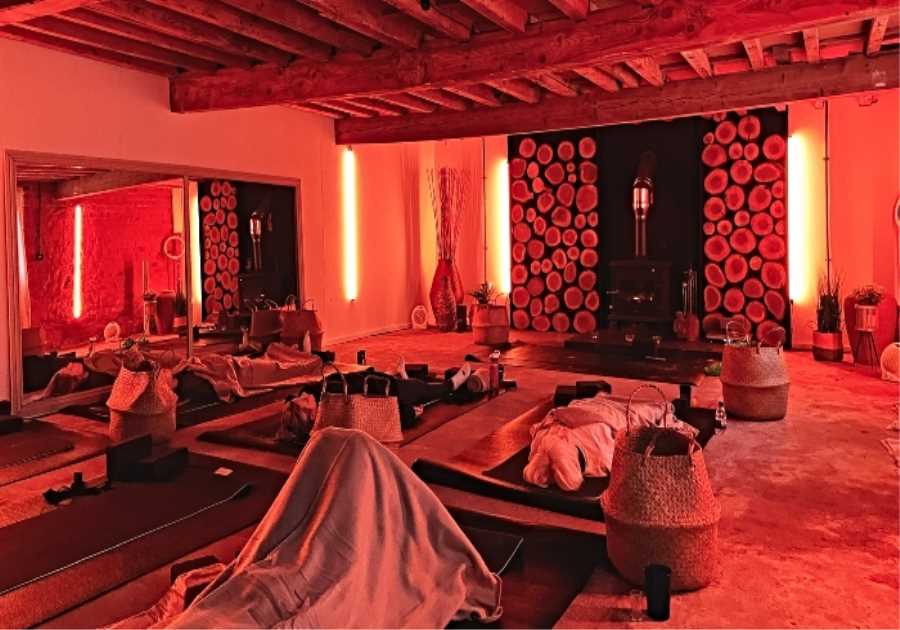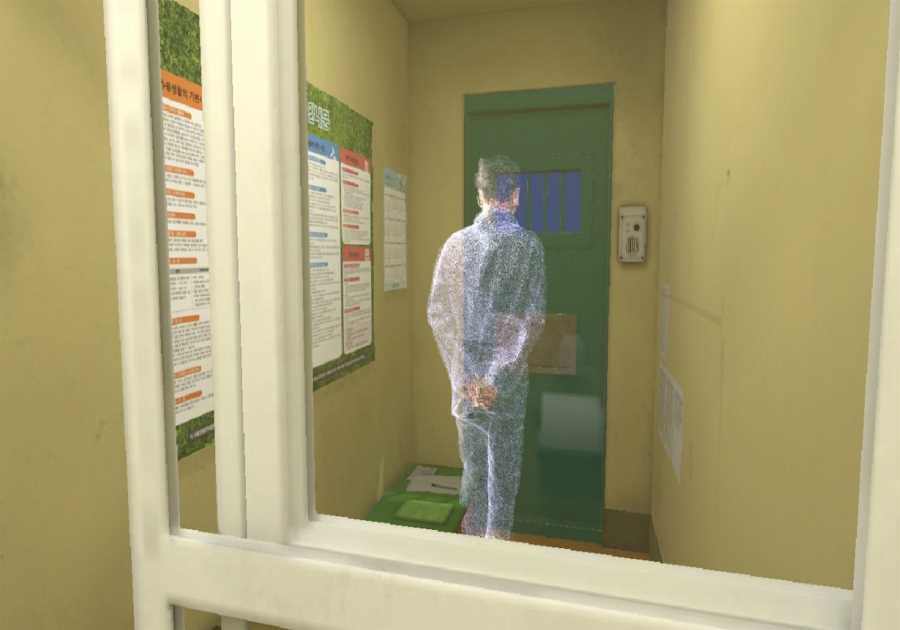Tyler Coburn runs a covert writing residency at Happitory, a wellness centre in South Korea designed to resemble a prison
Kwon Yong-seok was once so overwhelmed by his work as a public prosecutor that he asked to be jailed – temporarily. He reasoned that one week in a cell would have the desired therapeutic benefit.
Kwon’s request was denied, but it set an idea in motion. In 2013 he and his wife, the drama therapist Noh Jihyang, opened a wellness centre in South Korea called Happitory (‘Happiness Factory’), which they designed to resemble a prison. Guests can pay for the experience of getting locked in a cell; being deprived of their books and devices; and gaining a moment to pause, reflect on themselves and perhaps achieve something like enlightenment.
When I stayed at Happitory in 2019 I found very few things in my cell: a yoga mat, a tea set, bedding and (to my great surprise) pens and paper. In the years since, I’ve run a covert writing residency out of the centre, inviting nine people to produce new texts during 24-hour periods of ‘solitary confinement’ – using the materials on hand. The result is the publication Solitary (2022). What follows is a conversation with three contributors to the book: artist Kyungmook Kim; scholar Woochang Lee; and Jiwon Yu, a curator, writer, translator and interpreter.
Tyler Coburn Kyungmook, you’re unique among the contributors for having served time in actual prison, as a conscientious objector to military service. Fifteen months of your sentence were spent in solitary confinement. What was it like to revisit this chapter of your life through Happitory’s simulation?
Kyungmook Kim Happitory’s founders did as much as possible to make the experiences similar. Upon arrival I changed into a uniform and received a nametag with my room number, much like the one I received as an inmate. The cells are about the same size. And in both places, there are fixed times for going to bed and waking up.
A day in Happitory, like in prison, starts with music playing through a speaker in the room: the soundtrack to My Neighbour Totoro at Happitory; the propaganda music of the Ministry of Justice in prison, which declares that “the more I follow the law, the better I feel”. It’s a small difference, but an important one.
The biggest difference overall is the purpose of each space. In prison, a solitary cell is a specific architecture designed with the intent to punish. The ways you behave in your cell are monitored – for instance, you’re punished if you lie down before bedtime, stand without reason or sit on a towel. Happitory, by contrast, is a space of self-reflection and rest. There’s no obligation or repression at play.
Kyungmook Kim, 5.25m² (still), 2022, VR (6DoF) and Unity (exe). Courtesy the artist
TC In addition to monitoring, the absence of social contact has a punitive function. While I was editing our book, I visited the Eastern State Penitentiary in Philadelphia. Built in 1829 and closed in 1970, it was the very first prison to introduce solitary confinement – a place where inmates, confined to chapel-like cells, would come to feel penitence. The guards even wore socks over their shoes to help maintain the monastic atmosphere! Of course, the debilitating effects of solitary confinement were barely considered at the time.
When we met in 2019, you were beginning to make artwork about your 15 months in solitary – specifically, a VR piece called 5.25m² (2022).
KK I didn’t plan to make any artworks related to that experience after my release. In fact, for the next year and a half I tried to forget about it. I even wanted to leave Korea for a while to gain some distance from it, so I went to graduate school in the United States.
When I was in my solitary cell I could see the guards outside my room pointing out when I didn’t follow the rules. I was stressed by these constraints. As a way of coping with the situation, I trained myself to believe that there was nothing beyond my cell walls. The space within the cell was the only safe space for me.
In Chicago I found that I was treating an unfamiliar space in the very same manner as prison. I tried to build a safe space, and in the process I isolated myself. I came to realise that I was still affected by the memories and sensations of my solitary cell. I needed to stop avoiding them.
5.25m² refers to the average size of a solitary cell in a Korean correctional facility. I made a VR version of this cell, inhabited by a virtual inmate who repeats the same actions that I once did in solitary: circling like an animal, writing letters to friends, meditating and reading.

Kyungmook Kim, 5.25m² (still), 2022, VR (6DoF) and Unity (exe). Courtesy the artist
TC You’ve rendered this inmate as a 3D point cloud that periodically appears and disappears in a truly apparitional way. I watched documentation of a young woman experiencing the work and noticed that she’d sometimes copy the gestures of this figure, learning the dimensions of the cell through the constrained choreographies it allows.
In your text for the book, you describe how these actions helped you ‘endure that period in sound mind – without going crazy’. This resonates with Woochang’s contribution to the book, which considers some philosophical and historical dimensions of self- discipline and self-management.
Woochang Lee As you both observed, a solitary cell at Happitory is designed to help guests positively practise activities like reflection and meditation.
Guests participate in an orientation before they enter their cells: how to sit properly, how to breathe properly, how to bow properly. Notebooks are distributed, asking them to examine what’s most important in their lives. From a philosophical perspective, these protocols recall Michel Foucault’s ‘technologies of the self ’: the various devices we use to review, manage and (re)fashion ourselves. For instance, how to balance our diet, how many hours of exercise are suitable for our bodies, how many hours of sleep should we get, what types of people are good to be friends with.
Classical Western philosophy may be the first attempt to systematically classify technologies of the self, an endeavour that continues with the Christian tradition, mystical practices of meditation – and more recently in self-help publications and fitness trends.
Within certain religious and mystical traditions, the intent is to approach and encounter something transcendental. Happitory’s training leads a person to focus solely on their happiness.
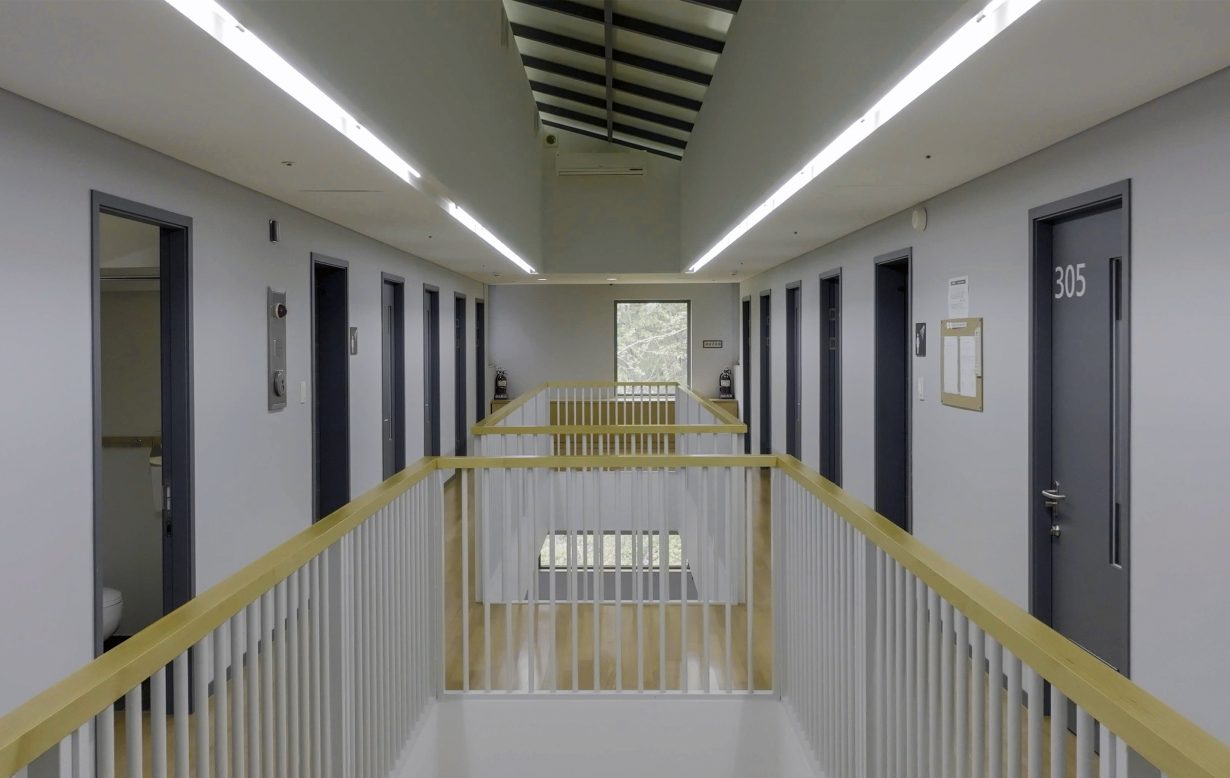
Interior view of Happitory. Courtesy Happitory
TC ‘Ruling yourself is your happiness’, as you write in your essay. Self-management becomes an end in itself. What role does solitude play in the ‘technologies of the self ’ you’ve been discussing?
WL The Stoics gave solitude a high status in philosophical life: by separating from the affairs of the mundane world, a philosopher could thoughtfully and critically examine their life. In effect, solitude was essential to self-management. A somewhat different strain of solitude runs through Romanticism, where the loneliness of the self – and its encounters with natural or unfamiliar worlds – give rise, if not to transcendence, then to poetic inspiration.
TC I can guess how we might get from the Romantics and their pathetic fallacies to the self-centred solitude of Happitory. I’m also thinking about the pens and paper in its cells. Seemingly in the service of diaristic reflection, they also figure into the history of writing in prison: from Oscar Wilde to Antonio Gramsci to Kim Dae-Jung. In many cases, writing materials weren’t readily available. I think of Martin Luther King Jr’s ‘Letter from Birmingham Jail’, written in 1963 on scraps of newspaper, paper towel and napkin that were smuggled out by his lawyer and speechwriter – and the memoir Behrouz Boochani typed as a series of WhatsApp messages to his translator during an extended detention on Manus Island (No Friend But the Mountains, 2018).
WL In Korea the best-known prison writing comes from persecuted democratic activists; Shin Young-bok’s Reflections from Prison (1988) in particular is still widely read. Imprisoned in his twenties as a university lecturer, Shin wrote that, over his 20-year sentence, he transformed into a ‘populist intellectual’. Within the ethical or quasi-religious framework of Korean populism, people on the lowest rung of society embody genuine wisdom and virtue; Shin thus came to see his fellow inmates as subjects possessing capacities vital for the nation’s liberation. Reflections from Prison repeatedly mentions what Shin learned from the inmates right next to him – how vain and lacking was the knowledge imparted by the upper-class world of college. A long period in prison was a revelation for this intellectual.
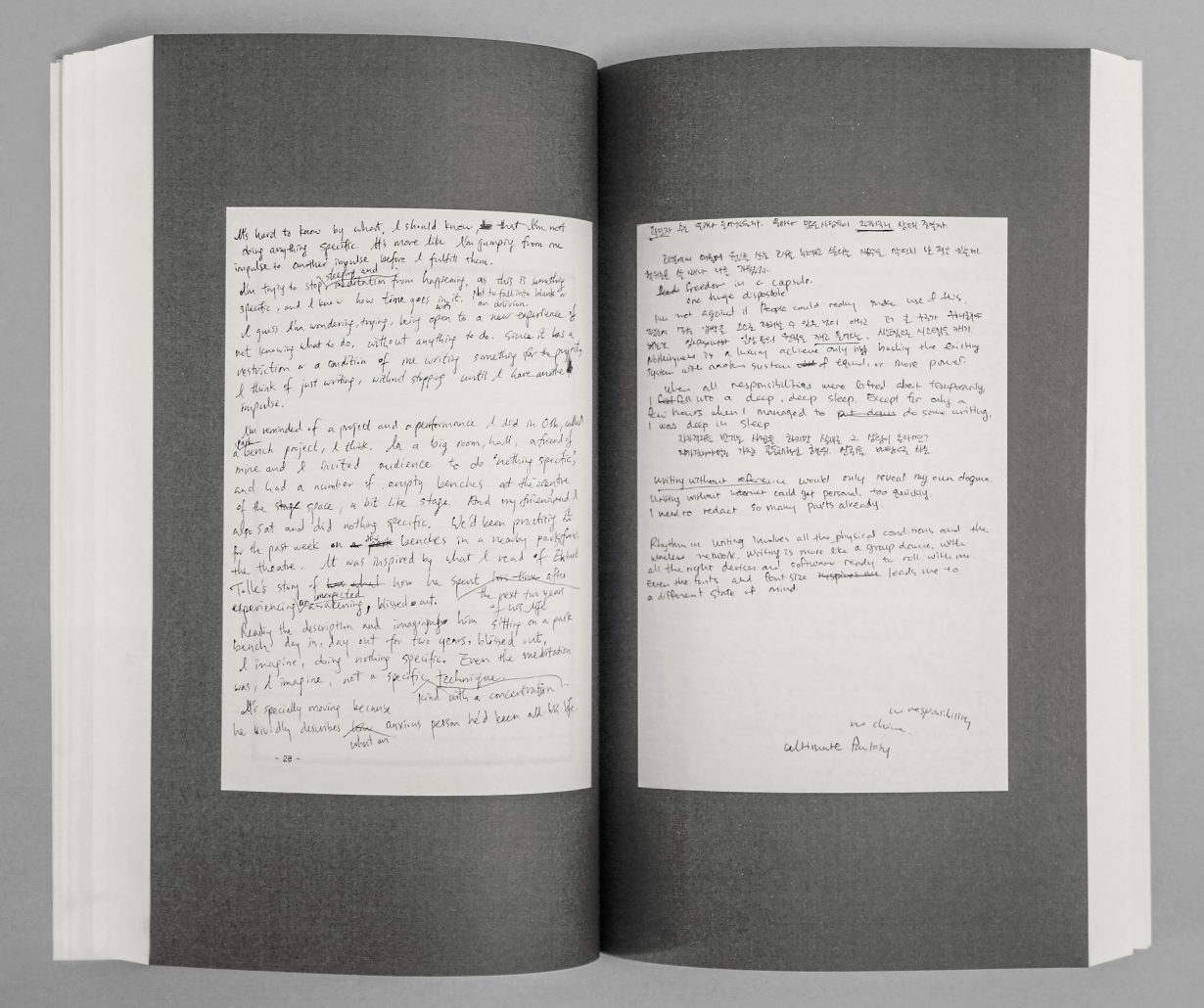
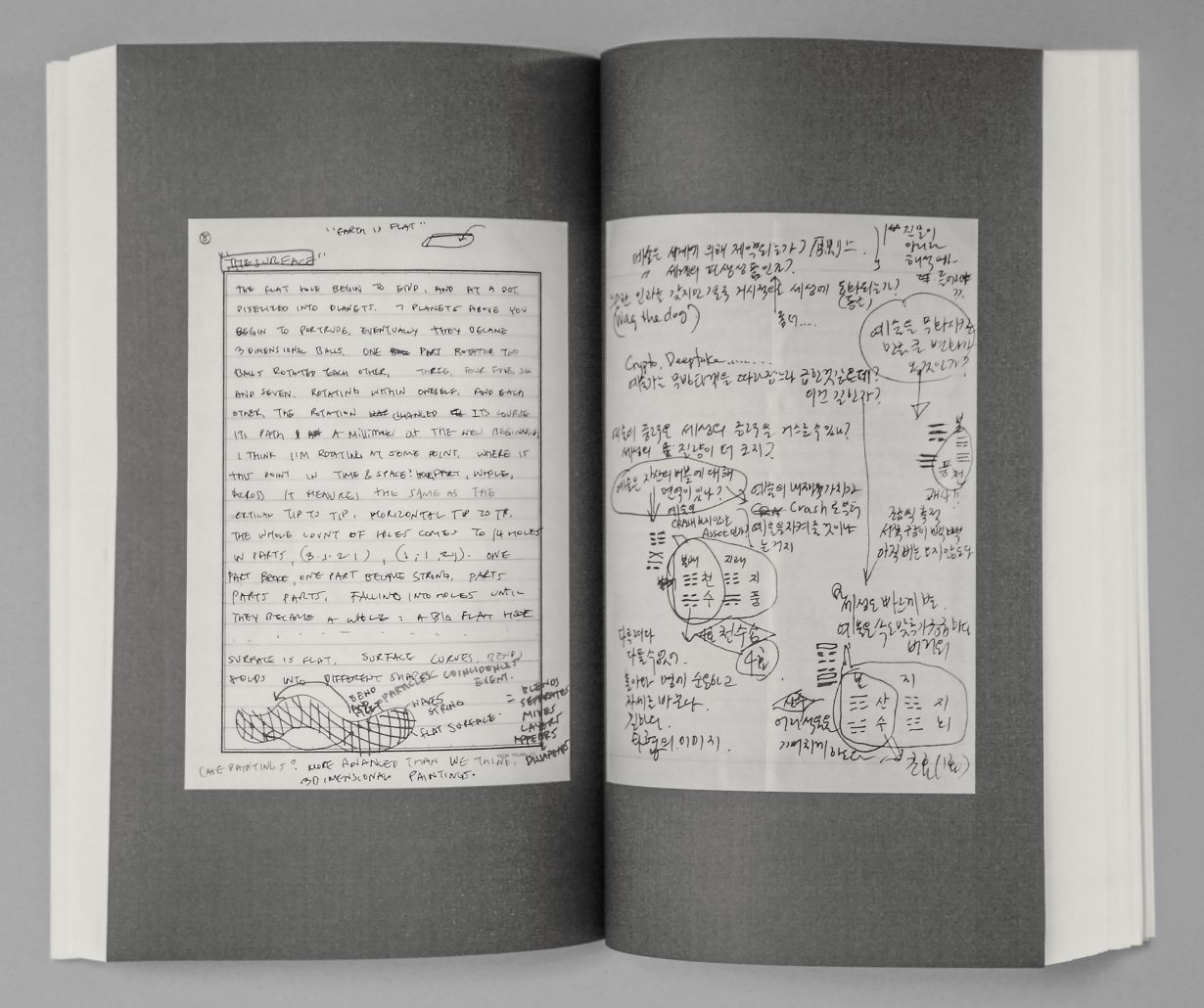
Pages from Tyler Coburn (ed), Solitary, 2022. Photo: Tyler Coburn. Courtesy Tyler Coburn, Sternberg Press, London, and Art Sonje Center, Seoul
TC We’ve been focusing on the carceral thematics of solitude, and it’s worth remembering that Happitory is a wellness centre. The experience it offers also shares something with temple stays and silent-meditation retreats, where one submits to certain constraints in pursuit of enlightenment, personal growth, catharsis – whatever they happen to call it. Jiwon, you describe this experience as ‘the luxury of disappearing altogether’.
Jiwon Yu Working as a freelancer, I’m expected to be available. It’s like a compulsion: I have to present myself always as having free time; I can never deny a proposal. I wouldn’t go to a place like Happitory purely for my own benefit. I needed your invitation and commission in order to give myself ‘permission’ temporarily to disappear.
During my stay, I thought about my upbringing. As is common in Korea, I attended a lot of mandatory camps and retreats. I’ve always had a love–hate relationship with them. School camps aim to produce compliant students. Religious camps try to bring you towards the faith. In most cases you’re cut offfrom your individual self for the purpose of some collective endeavour, which is why I used to reject them.
At the same time I have an impulse to cave in, almost a masochistic wish to surrender myself. The alpha-girl discourse, which was prevalent in my youth, claimed that I had to become a successful, independent woman who achieved everything all by herself. My life as a freelancer is basically the fulfilment of this demand, though whenever I get exhausted by the task of managing myself I think back to those camps and retreats.
TC Since 2016 you’ve been part of an art writing collective called Yellow Pen Club while also building a career as a critic. It seems you’ve found a way to bridge the collective and individual narratives of your youth.
JY I didn’t realise it at the start, but YPC is rather peculiar. We aren’t just copy-editing and commenting on completed writing; we participate throughout the entire process, from choosing what to write about to when and how to finish a text. The way we engage in one another’s texts also applies to how we run YPC SPACE, a gallery and programme space we opened earlier this year.
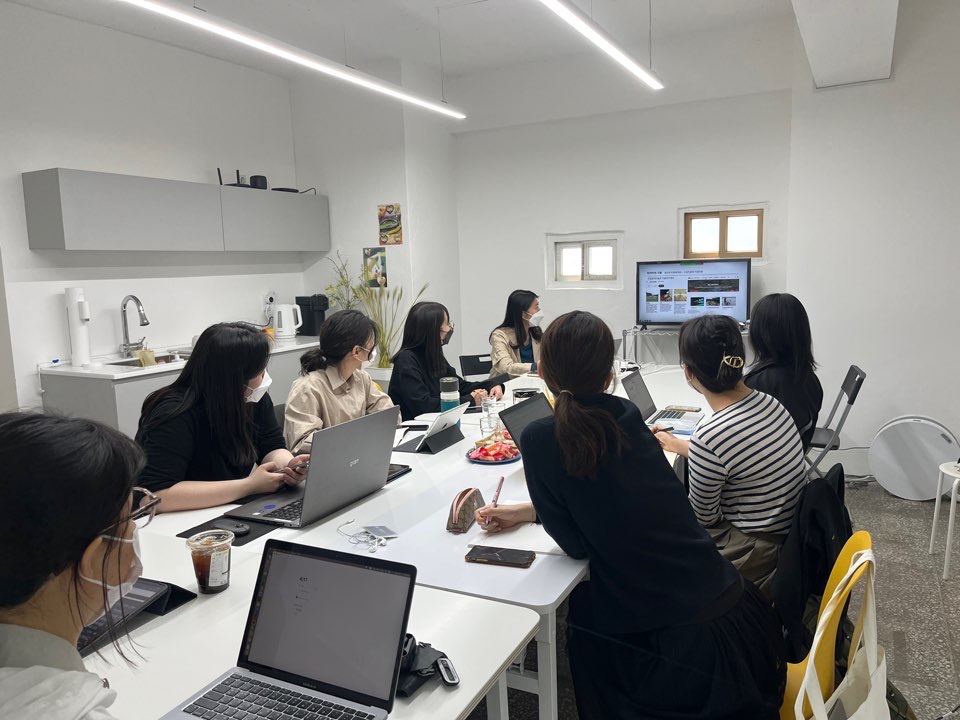
Documentation of a workshop held at YPC SPACE, Seoul, in April. Photo: Haemin Ryu. Courtesy YPC SPACE
TC Even before opening YPC SPACE, the collective held workshops and programmes for the general public. As you wrote on SEMA Coral, the Seoul Museum of Art’s site, earlier this year, the workshops train participants to meticulously describe artwork, establish multiple physical viewpoints and also capture its environment. The goal is to produce art writing that’s ‘faithful to the senses’. And the means of achieving it is through ‘mutual editing’.
JY These methods are also important to my own writing process, but they’re not the only components. A certain shape of window on my computer monitor, the environment and ambience, the publications around me – as I mention in my essay, ‘writing is a collective dance of all these things’. Lacking them at Happitory, I felt that some part of my consciousness was absent, and it was difficult to write. I spent most of those 24 hours asleep in the cell. The notes I did make were a fragmentary mix of Korean and English. I doubted that they could become a text.
I was struck by how many private thoughts arose during that solitary period. Most of them I couldn’t write down. But some of them do appear in strikethrough, with the intention of showing my editing process.
TC When designer Luke Gould and I were assembling the book, we decided to include scans of some original writing done by contributors at Happitory. What’s shown are ideas being worked out, sometimes in both English and Korean – often with strikethroughs and supplements. The strikethroughs in your text build important links to this section of the publication.
I think of Solitary as an experiment in site-specific writing that works within the constraints of Happitory, accepts the pen and paper it provides, and generates something more than the expected self-reflection. I was curious how you each would respond to the phenomenological qualities of this place, where prison is a simulation and also a metaphor – as the founders explain – for the personal and societal strictures that limit the self. Jiwon, what you just said makes me wonder whether or not writing is always site-specific. One need not steal away to a solitary cell to appreciate the atmospheric dimensions of putting word to page.
Solitary (2022) is published by Sternberg Press, London, and Art Sonje Center, Seoul. This conversation was adapted from a panel held at Art Sonje Center on 20 August
Features
Always check our latest articles at...
https://yogameditationdaily.com/meditation-retreats

